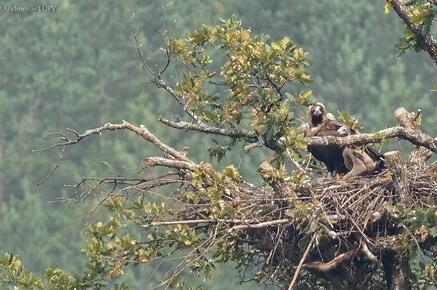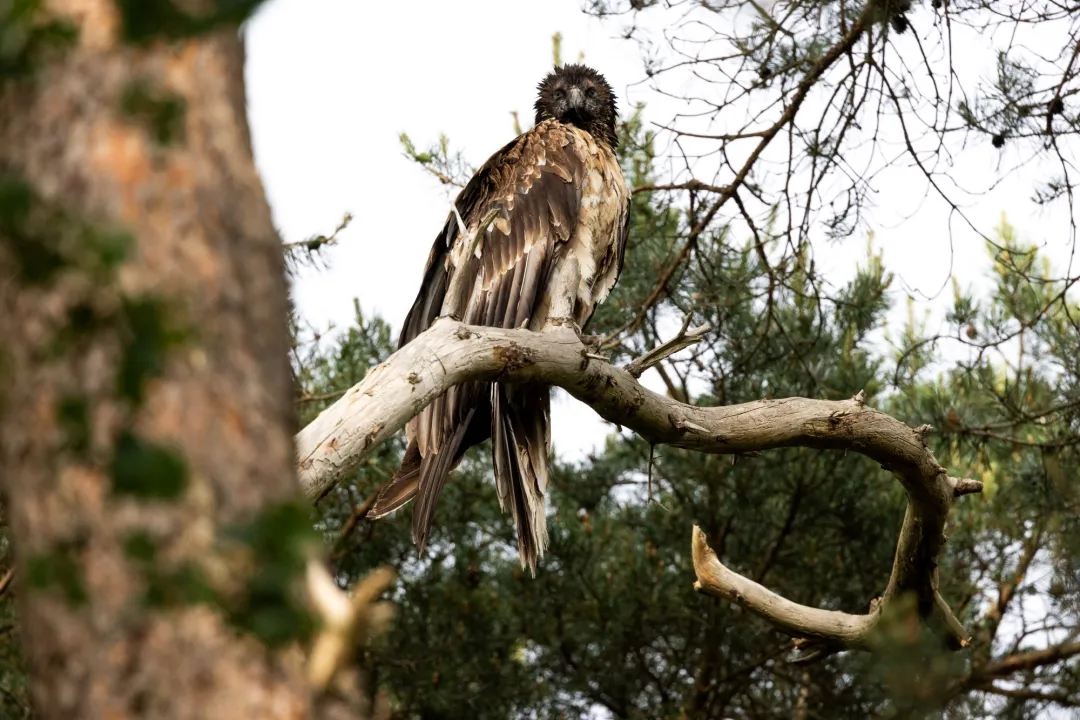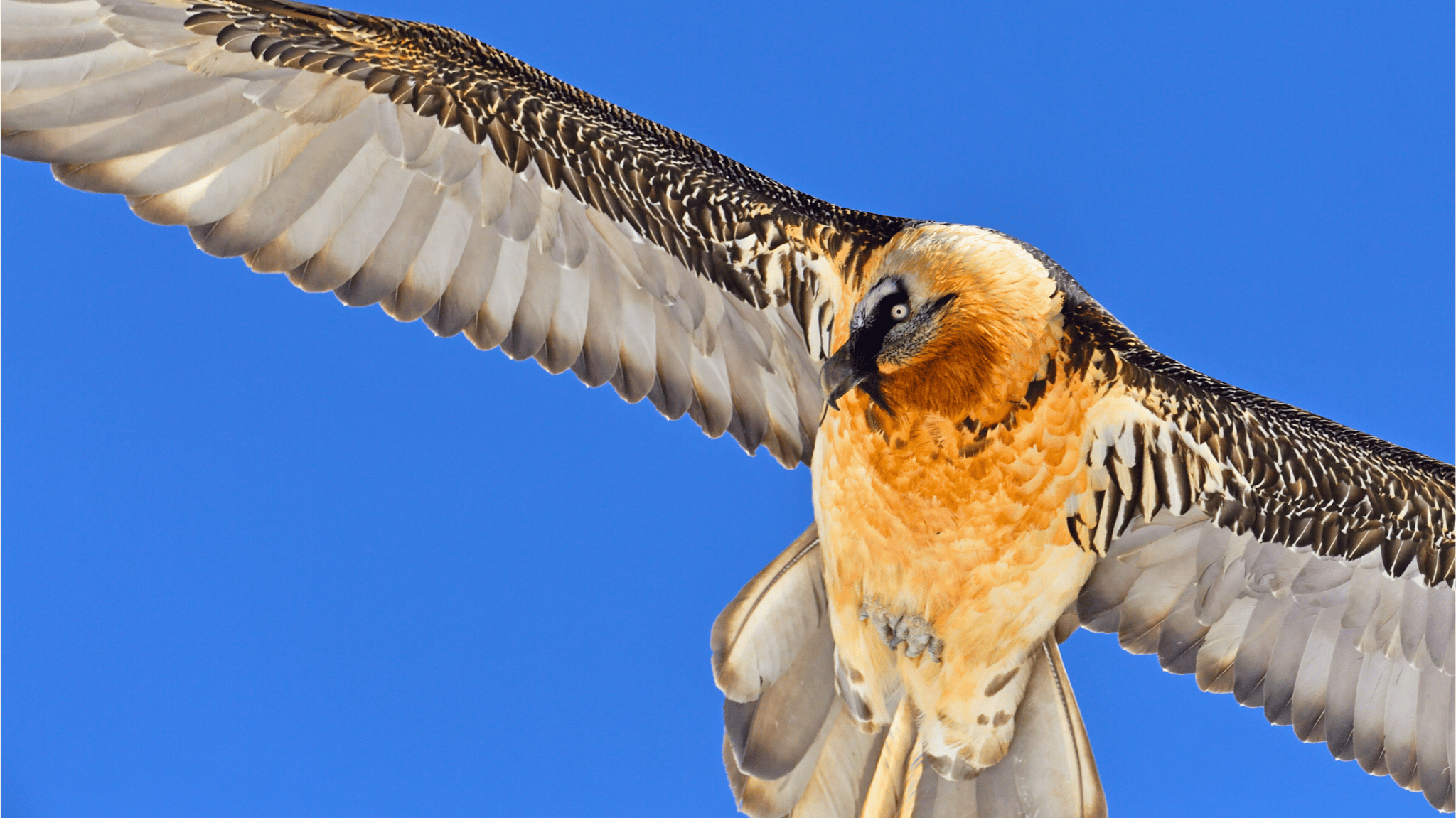At one point the majestic black vulture came to within 40 metres of all the vulture experts gathered there, in the veranda of the Hospederia de Monfrague, in the heart of the Monfrague Biosphere reserve, during a pause in the workshop to develop the European, Middle East and Central Asia part of the vulture multi-species action plan – like if it wanted to say something about the important discussions that were being held just inside.
And indeed it could – during the first day of the conference we had heard the impressive work that the Junta de Extremadura is doing for vultures. It is no surprise then that black vultures fly over the site in such great numbers – it is partly the results of the considerable investment done by the regional government, NGOs, farmers and livestock breeders. As we have heard several times during the workshop, Monfrague is the home of the vultures – indeed all black vultures and the dozens of griffons flying overhead at any one time were indeed a majestic, distracting feature for the 70 participants from 25 countries and from over 50 different organizations (including national governments) gathered there.
But we did manage to spend several hours a day indoors to tackle the challenge that the Convention on Migratory Species (CMS) had set – to develop a Multi-species Action Plan to Conserve Eurasian Vultures (Vulture MsAP), a comprehensive strategic Action Plan covering the whole geographic range of the 4 species of Eurasian vultures (Bearded Vulture (Gypaetus barbatus), Egyptian Vulture (Neophron percnopterus), Cinereous (Black) Vulture (Aegypius monachus) and the Griffon Vulture (Gyps fulvus)), to promote concerted, collaborative and coordinated international conservation actions.
In the end, we arrived to several conclusions. A systematic analysis of the threats on the four species across the global range identified that the most critical threats were
-
The use of poison baits to kill predators or other wildlife
-
Collision with lines
-
Electrocution
-
Collision with wind farms
-
Availability of in situ food
The vulture researchers, conservation practitioners, land managers and government representatives gathered there have also listed a number of essential actions to secure the conservation of those 4 vulture species across Eurasia and the Middle East, namely
-
Enhanced legislation & law enforcement to decrease human disturbance and direct persecution
-
New protected areas and enhanced regulations (including EIA)
-
Sensitivity mapping for electric and windfarm networks
-
Correction of collision and electrocution blackspots
-
Use of safe pylons on new lines, adequate maintenance of corrected insulated pylons
-
Improved planning for new lines and windfarm, including the identification of windfarm exclusion zones, and improved monitoring protocols
-
Establishing national poisoning databases and monitoring poisoning incidents effectively, with adequate toxicological screening, also for agrochemicals and veterinary drugs
-
Creation and training of anti-poisoning enforcement units
-
Promotion of effective livestock management, improvement of compensation schemes against predator damages
-
Banning diclofenac if it enters vulture food chain
-
Awareness raising on the issue of lead poisoning, leading to ban hunting with lead ammunition in at least the EU by 2027
-
Establishing good baseline data, with a regional wide vulture census every 10 years
The meeting was organised and led by Vulture Conservation Foundation (VCF), and was financially supported by the CMS Coordinating Unit of the Raptors MoU and the following organisations: Diputación de Cáceres, Dirección General de Turismo, Dirección General de Medio Ambiente from the Junta de Extremadrua (Regional Government of Extremadura) and the National Park of Monfragüe.
Selecting Extremadura as a meeting point for this important vulture event was not a coincidence. Extremadura is one of the most important vulture areas in world, holding impressive population of Cinereous (Black) Vultures (900 breeding pairs), more them 3000 Griffon Vulture pairs and about 170 pairs of the Endangered Egyptian Vulture – for more info on watching vultures in Extremadura, please visit http://www.birdingextremadura.com, the regional government´s portal for birdwatching tourism.
It was a huge pleasure to discuss vultures when so many were flying overhead – maybe the black vulture that came close to the group during that coffee break did want to say something – keep going, all together for vultures!
Photos: VCF, André Botha, Joaquim Teodósio





